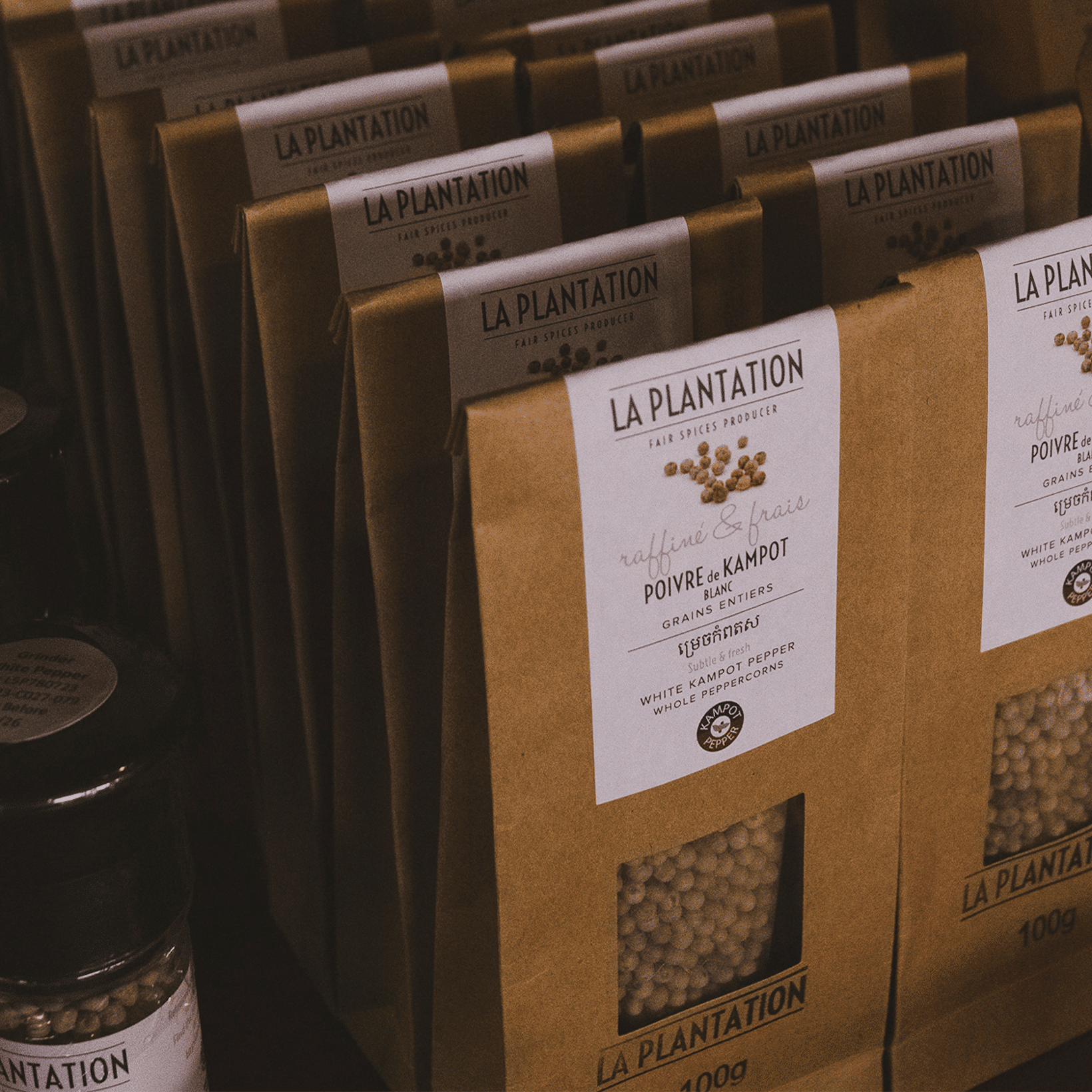
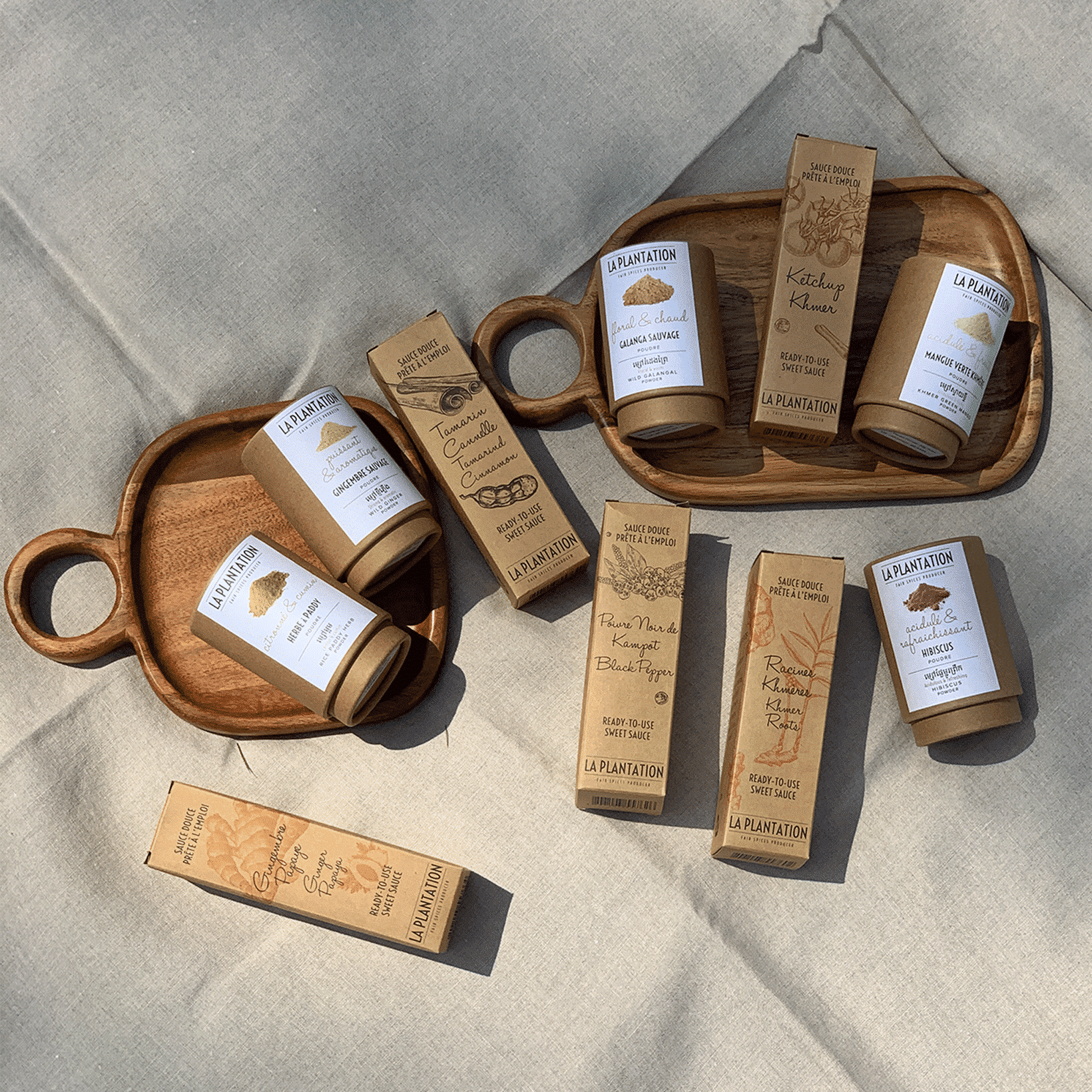
8 spices to discover for a spicy new year
Not only do spices add depth and complexity to our dishes, but they also offer a host of health benefits. Many spices are high in antioxidants and have anti-inflammatory properties, making them a great addition to any healthy diet.
Incorporating spices into our cooking doesn’t have to be intimidating or time-consuming. Even a small amount of a flavorful spice can transform a dish from ordinary to extraordinary. Plus, using spices can help us cut back on added salt, sugar, and other additives, making our meals healthier overall.
So, this new year, let’s spice up our cooking and reap the many benefits that spices have to offer!
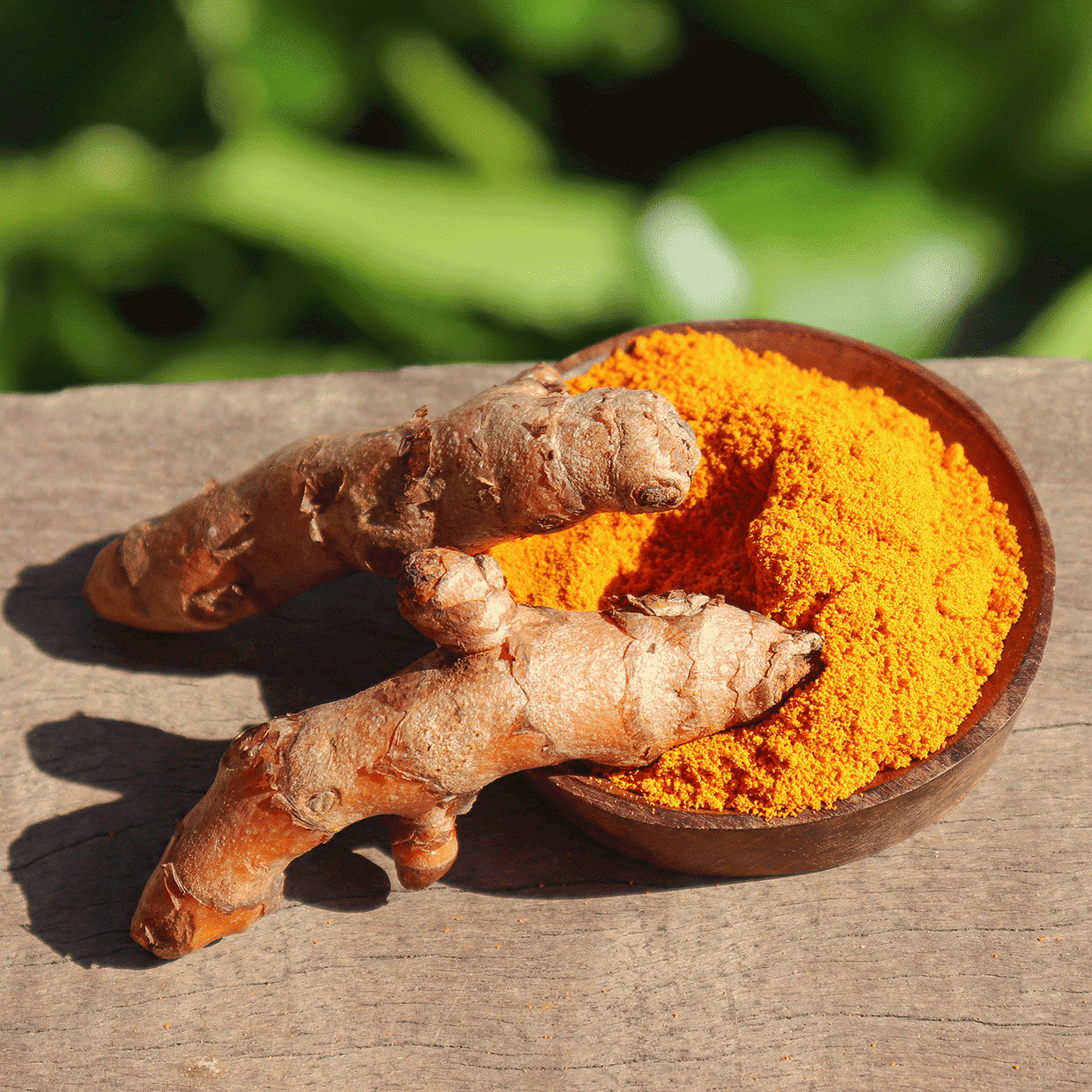
The Shock Duo: Turmeric + Black Kampot Pepper
Turmeric and Black Kampot Pepper are often used together in cooking, as their flavours complement each other well and they offer a variety of health benefits.
Turmeric is a spice commonly used in Indian and Middle Eastern cuisine. Known for its bright yellow colour and warm, slightly bitter taste, it is rich in antioxidants and has anti-inflammatory properties. Turmeric has traditionally been used to treat a variety of ailments, including digestive problems, pain and inflammation.
Black Kampot Pepper is a type of pepper grown in Cambodia and is known for its complex, floral flavour. It is often used in cooking and has been traditionally used to treat digestive problems and as a natural pain remedy.
When used together, Turmeric and Black Kampot Pepper enhance the benefits of each other, becoming more easily assimilated into the body. They are often used in curries, rice dishes and marinades, and can also be added to smoothies and other drinks to enhance the flavour.
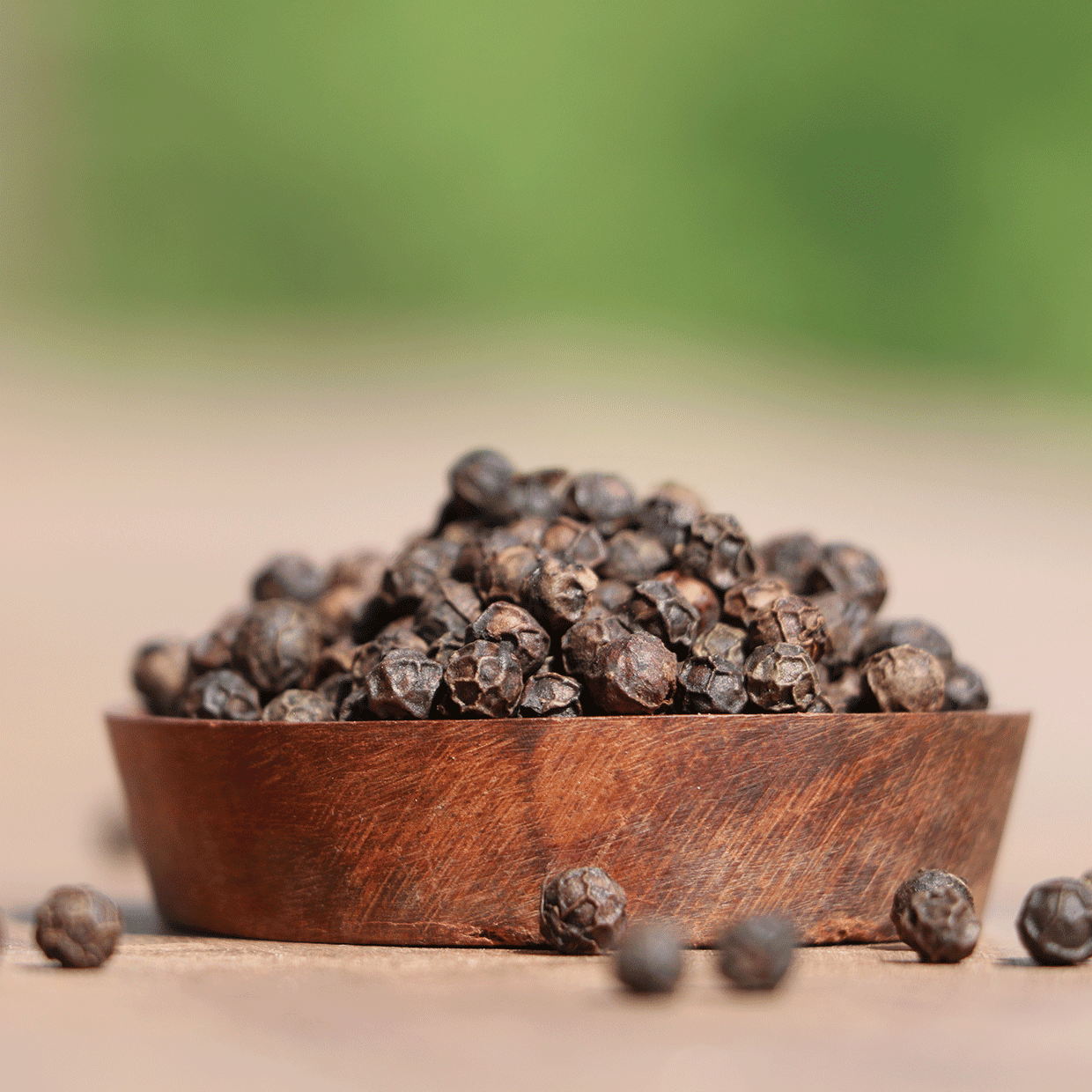
Here are some recipe ideas:
– Chicken curry: This tasty curry is made with chicken, coconut milk, vegetables and Turmeric and Black Kampot Pepper. Serve it over rice or with naan bread for a delicious and satisfying meal.
– Rice: This simple and tasty side dish is prepared by cooking rice with Turmeric, Black Kampot Pepper. It’s a great way to add flavour to plain rice and goes well with a variety of main dishes.
– Smoothie: This refreshing smoothie is made with Turmeric and Ginger powder, banana, pineapple and coconut milk. A pinch of Black Kampot Pepper adds a hint of heat and depth to the flavour!
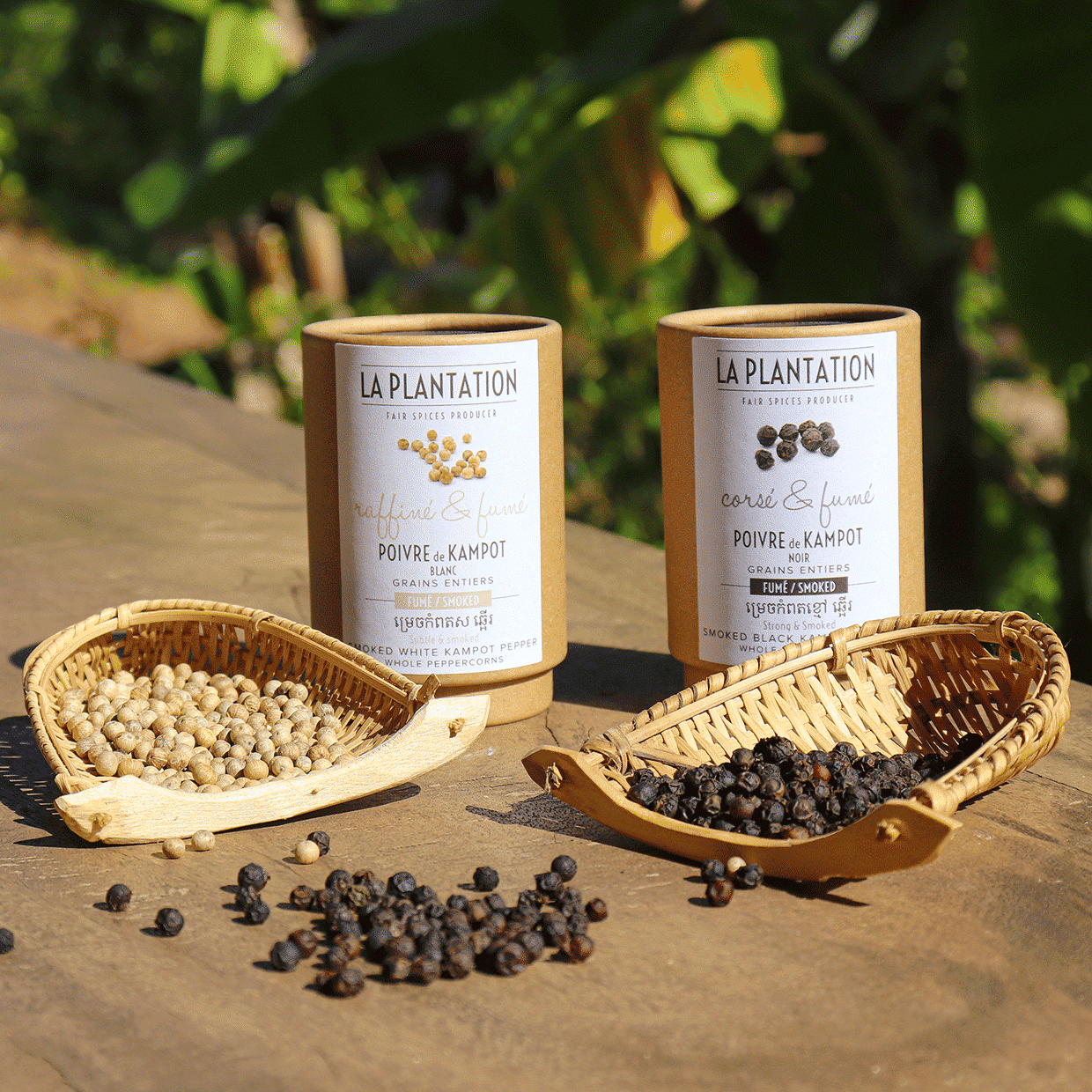
Smoked Kampot Pepper
Already a fan of our Kampot Peppers? Now is the time to discover them in a cold-smoked version. Thanks to a process lasting several hours in our smokehouse, a smoky aroma develops that blends particularly well with the strength of Black Kampot Pepper and the freshness of White Kampot Pepper.
They can be ground directly onto dishes, or used whole in marinades, spice blends and rubs. They pair well with a variety of meats, vegetables and grains, but why not also with fish and seafood, and even to add a little pizzazz to a dessert!

Khmer Currys
Curry is a popular dish in Khmer culture and is enjoyed in many parts of Cambodia. It is usually made from a mixture of spices and is prepared by adding herbs, vegetables, meat or seafood, and is served over rice or noodles. Ready to use, discover our two Khmer Currys: the Green and the Red, for a nice dose of flavours that will warm up your winter cooking!
There are many types of curry in Khmer culture, each with its own flavour and ingredients. Here are some common types of curry:
Amok: Amok is a popular Khmer curry made with coconut milk, lemongrass and turmeric. It is often prepared with fish or chicken and is usually served in a banana leaf or coconut shell.
Bok l’hong: Bok l’hong is a spicy curry made with mango, pineapple and various vegetables. It is usually prepared with pork or chicken and served with rice.
Samlar k’tey: Samlar k’tey is a mild curry made with coconut milk and various vegetables. It is often prepared with chicken or beef and served with rice.
Curry is an important part of Khmer culture and is often served on special occasions and celebrations. It is also a staple of everyday life and is enjoyed by people of all ages.
In addition to its role in Khmer culture, curry is also popular in many other parts of the world and has become a global dish. It is enjoyed in a variety of forms, from traditional dishes to fusion cuisine, and is known for its rich and flavourful taste. Try making your own curry at home this winter!
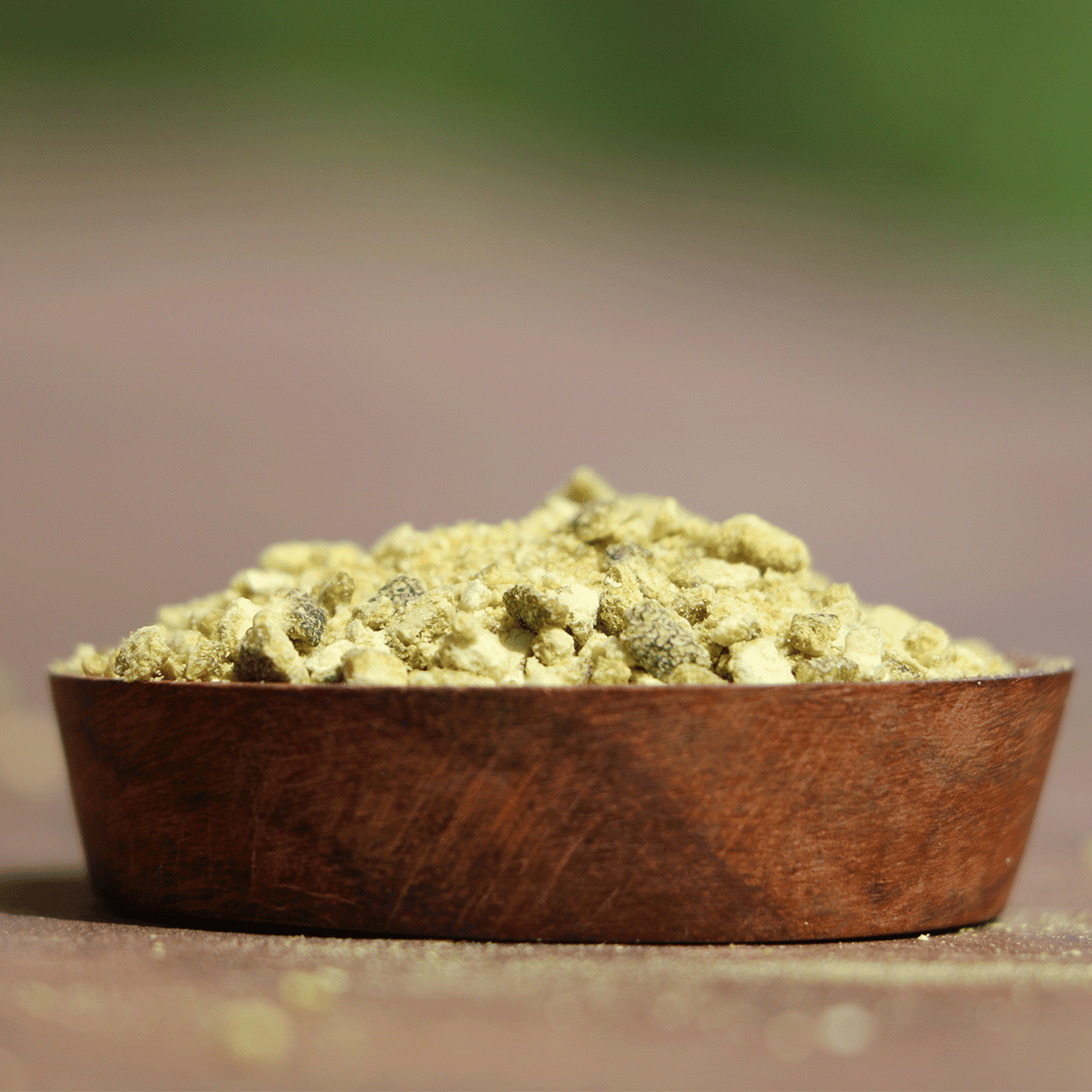
Kaffir Lime Rinds & Leaves
Kaffir Lime, also known as Combava, is a type of citrus fruit native to Southeast Asia, known for its highly fragrant peel and leaves. It is commonly used in cooking and is a key ingredient in many traditional Cambodian and Thai dishes.
The Kaffir Lime rind is thin and bumpy and has a distinct citrus aroma. It is often grated or thinly sliced and used to flavour a variety of dishes, including curries, soups and marinades. At La Plantation, we dehydrate the Combava Rinds on the day it is harvested, to preserve its freshness and characteristic aroma.
Kaffir Lime leaves are also very fragrant and are often used in cooking. They are usually finely chopped and are used to flavour a variety of dishes, including soups, stews and stir-fries. Our teams harvest these Leaves by hand from the botanical garden at our Kampot Farm.

Kaffir Lime is a versatile ingredient that adds a unique and refreshing flavour to many dishes. It is commonly used in Southeast Asian cuisine, but can also be used in a variety of other cuisines, here are some ideas:
Shrimp Stir-Fry: This quick and easy stir-fry is made with shrimp, vegetables and a sauce flavored with Kaffir Lime Leaves and Rinds. It’s a great weeknight meal that takes only minutes to prepare.
Salad Dressing: This refreshing dressing is made with lemon juice, oil, honey and Kaffir Lime. It’s a great way to add flavour to salads, grilled vegetables and other dishes.
Cocktails: Kaffir Lime adds a unique and refreshing touch to cocktails. Try adding some of its Rinds or Leaves to your favourite gin and tonic or mojito for a burst of flavour, they can also be used to spice up a margarita by adding some to the rim of one side of the cocktail glass.
There’s no doubt about it, this year 2023 is going to be spicy! Don’t hesitate to send us your photos and recipes on our social networks @laplantationfairspices
